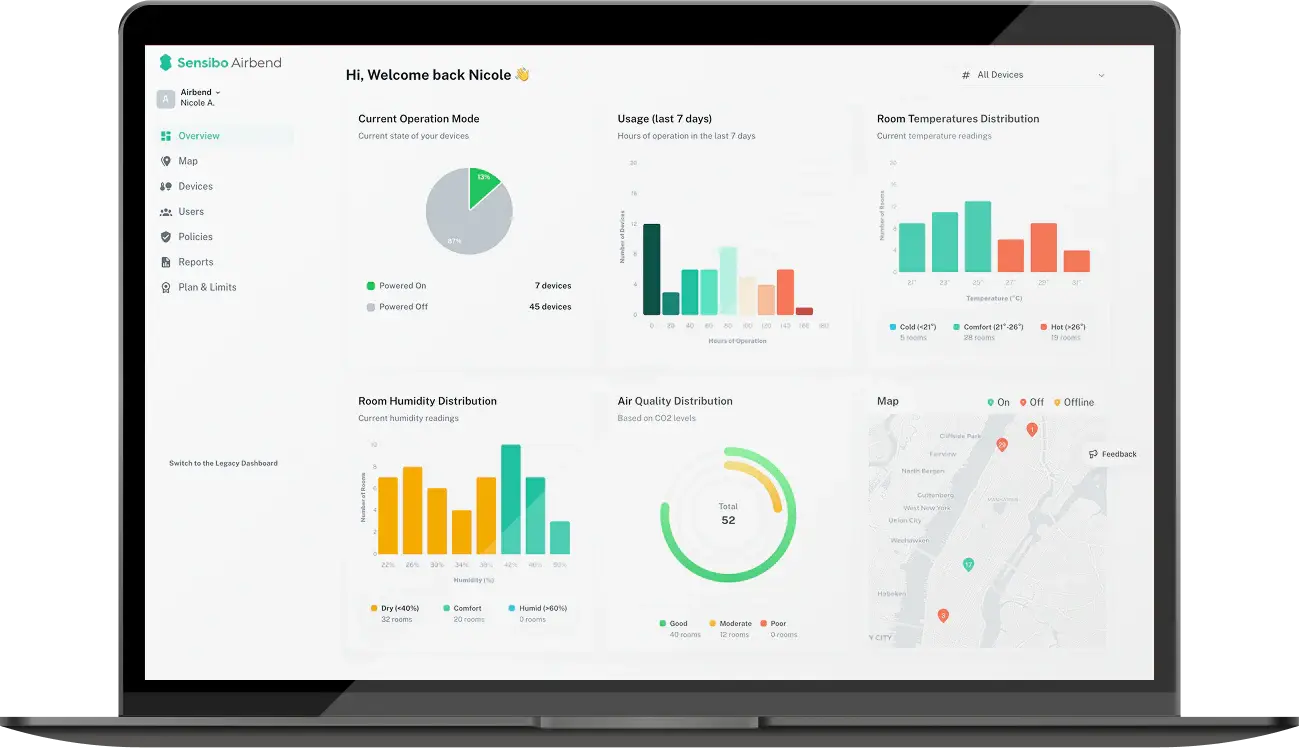Electricity Prices Rising in USA: How to Reduce Energy Bills in 2026
Key Takeaways
- Electricity prices rose 5.2% nationally between July 2024 and July 2025, with some states seeing increases above 22%
- Natural gas costs jumped 40% in 2025, driving up generation costs for over 40% of U.S. electricity
- Smart thermostats save 3% per degree adjusted, potentially cutting heating and cooling costs by 10-20%
- Phantom loads cost $100 yearly per household—smart power strips eliminate this waste
- LED bulbs use 90% less energy than incandescent bulbs and pay for themselves within months
- Solar panels can reduce bills 50-90% depending on system size and location, with 30% federal tax credit available
American households face a harsh reality: electricity prices keep climbing faster than wages can catch up. Between July 2024 and July 2025, residential electricity bills increased 5.2% nationally-with the average reaching 17.47 cents per kilowatt-hour. Just as restaurants place reserved table signs to manage limited seating during peak hours, families now must strategically "reserve" portions of their budget specifically for energy costs, which reached an average of $1,902 annually per household in 2025. Electricity has become "the new price of eggs" the household expense that symbolizes economic anxiety. The question isn't how much the electricity price increase will be, but how prepared you'll be when it happens.
Why Your Electric Bill Keeps Getting Bigger
The U.S. Energy Information Administration reports that electricity prices tracked inflation between 2013 and 2023, but projections through 2026 show prices will continue outpacing general inflation. Maine saw a 36.3% jump, Connecticut rose 18.4%, and Utah climbed 15.2% between 2024 and 2025.
Natural gas drives these increases. Over 40% of U.S. electricity generation relies on natural gas, and costs surged more than 40% in the first half of 2025 compared to 2024. As America exports more liquefied natural gas to international markets, domestic electricity prices face upward pressure. The Energy Department predicts another increase through 2026.
Electric utilities have ramped up capital investments to replace outdated generation and delivery systems. Distribution spending now exceeds what utilities spend on transmission and production combined, and regulators pass these infrastructure costs directly to consumers.
AI operations and cloud computing facilities consume massive amounts of power. In Northern Virginia's "data center alley," these facilities accounted for over 60% of a recent price increase in regional grid auctions, representing $9.3 billion that customers will pay.
Regional Differences You Need to Know
Hawaii residents face the nation's highest electricity prices at 42.49 cents per kilowatt-hour because the state relies on imported crude oil for generation. Idaho residents enjoy the lowest rates at 11.69 cents per kilowatt-hour, thanks to abundant hydroelectric power.
Pacific region households will see prices rise 26% between 2022 and 2025, pushing rates above 21 cents per kilowatt-hour. West North Central states will experience more modest 8% increases, keeping rates around 11 cents per kilowatt-hour. Rhode Island charges 27.84 cents per kilowatt-hour, while North Dakota residents pay just 11.69 cents-a 138% difference.
States with diverse energy portfolios and renewable resources generally fare better than those dependent on fossil fuels or imported energy. Understanding your state's position helps you gauge how aggressive energy-saving measures will deliver meaningful returns.
Heating and Cooling: Your Biggest Opportunity to Save
Your heating and cooling system represents your largest electricity expense. Adjusting temperatures strategically can reduce your electricity bills by 10-20% annually without major investments.
Every degree you adjust during winter saves approximately 3% on energy costs. During summer, setting your temperature to 78-80 degrees significantly reduces air conditioning costs. When leaving home for four hours or more, push the temperature above 80 degrees.
Ceiling fans make higher temperatures tolerable. During summer, set fans to rotate counterclockwise-this pushes cool air down and creates a breeze effect. During winter, reverse to clockwise rotation to circulate warm air throughout the room.
A smart thermostat automates these adjustments by learning your schedule and changing temperatures when you sleep or leave home. These devices send alerts when air filters need replacement or HVAC systems require maintenance. While they cost $100-250 upfront, they typically pay for themselves within two years through reduced consumption.
 Stop Phantom Loads from Draining Your Wallet
Stop Phantom Loads from Draining Your Wallet
Electronics consume electricity even when turned "off." This phantom load accounts for 5-10% of home energy use-roughly $100 annually per household. Televisions, computers, gaming consoles, and speakers sit in standby mode, drawing power constantly.
Smart power strips cut power completely when devices aren't actively in use. Advanced models work through timers, detect inactivity periods, or respond to a master device. When you turn off your television, the power strip cuts power to connected streaming boxes and sound systems.
For room-level energy management, smart climate control devices let you monitor and adjust individual air conditioning units remotely. These work particularly well with window units, mini-splits, or ductless systems, preventing energy waste in unoccupied rooms while maintaining comfort where needed.
Your refrigerator runs 24/7, making efficiency critical. Keep coils clean-dust buildup forces the compressor to work harder. Set refrigerator temperatures between 38-40 degrees Fahrenheit and freezer temperatures around 5 degrees. Check door seals regularly and replace damaged ones. Plan what you need before opening the door to minimize cold air loss.
Water heating ranks as your second-largest home energy expense. Turning your water heater down to 120 degrees saves 3-5% for every 10-degree reduction. Insulating the tank and the first six feet of hot and cold water pipes prevents heat loss. Tankless water heaters operate 35-45% more efficiently than traditional tank models.
Quick Wins: Laundry, Kitchen, and Lighting
Laundry: Wash clothes in cold water-modern detergents work effectively at lower temperatures, and you eliminate energy needed for heating. Run only full loads. Skip the heated dry cycle on your dishwasher and use eco mode when available. Air drying dishes uses zero electricity.
Kitchen: Microwave ovens use half the energy of conventional ovens. When using a conventional oven, avoid opening the door to check cooking progress-each opening releases heat. Don't preheat longer than necessary.
Showers: Standard showerheads flow at 2.5 gallons per minute. Cutting two minutes from your shower saves five gallons of water and heating costs. Low-flow showerheads reduce flow to two gallons per minute, saving 2,700 gallons annually per household.
Lighting: LED bulbs use up to 90% less electricity than incandescent bulbs and last significantly longer. A 60-watt equivalent LED bulb draws only 8-12 watts. Replace bulbs in high-use areas first-kitchens, living rooms, and outdoor fixtures that stay lit for hours daily offer the biggest returns.
Utility Programs Cut Your Electricity Bills
Most utility companies offer programs to help customers reduce consumption. Time-of-use rates charge less for electricity during off-peak hours. Running dishwashers, washing machines, and charging electric vehicles overnight delivers real savings under these plans.
Many utilities provide free home energy audits or rebates to cover audit costs. Professional inspectors identify specific problems and recommend targeted solutions, often revealing issues like inadequate insulation or inefficient HVAC systems.
Low-income households may qualify for bill assistance. Programs like CARE and FERA offer 18-20% discounts on monthly electricity bills. The federal Low Income Home Energy Assistance Program provides roughly $4 billion annually. Contact your utility company to learn about eligibility requirements.
Some utilities offer rebates for purchasing energy-efficient appliances. Air conditioner rebates, refrigerator recycling programs, and LED bulb giveaways help offset upfront costs. Check your utility's website before making appliance purchases.
Solar Power Reduces Long-Term Costs
Solar panel costs have dropped dramatically while efficiency has improved. The Federal Solar Tax Credit covers 30% of installation costs through 2032. State and local incentives add to these savings, and many states offer net metering programs that allow selling excess electricity back to the grid.
Solar installations can reduce your electricity bills by 50-90% depending on system size, location, and consumption. Southern states with abundant sunshine generate more solar power, but even moderate solar resources deliver meaningful savings when the electricity price increase continues.
Battery storage systems capture excess solar generation for use after sunset. These systems provide backup power during outages while maximizing solar investment returns. Batteries cost more than solar panels alone but eliminate the need to buy grid electricity during evening hours.
Monitor Your Usage and Spending
Smart meters give real-time visibility into electricity consumption. Many utilities now offer apps showing hourly usage. Review consumption at 3 AM-if it matches evening usage, you have significant phantom loads that need addressing.
Compare your usage to similar homes in your area. Utility bills often include this comparison, showing how your consumption exceeds neighborhood averages. Above-average consumption suggests opportunities for improvement.
Set up bill forecast alerts through your utility's app. These notifications warn when monthly charges will exceed your target amount, giving you time to reduce consumption before the billing cycle ends.
 Deregulated Markets: Shop for Better Rates
Deregulated Markets: Shop for Better Rates
Thirteen states offer deregulated electricity markets where consumers choose their power supplier. Texas, Pennsylvania, Ohio, Illinois, and Maryland represent the largest markets. While local utilities maintain infrastructure, competing suppliers offer various rate plans.
Fixed-rate plans lock in electricity prices for six months to three years. Variable-rate plans fluctuate with market conditions, offering potential savings during low-demand periods but exposing you to price spikes. Compare effective rates-some providers advertise low base rates but include fees that increase actual costs.
Read contracts carefully before switching providers. Early termination fees can exceed savings if you need to switch before your contract ends. Customer reviews reveal billing errors or poor customer service.
Your Action Plan for 2026
Start implementing changes now rather than waiting for bills to become unmanageable. The average American household uses about 1,000 kilowatt-hours monthly. Aggressive efficiency measures can reduce this by 20-30% without sacrificing comfort. At current rates around 17 cents per kilowatt-hour, a 25% reduction saves roughly $510 annually and these savings grow as electricity prices continue rising.
Immediate actions:
- Replace high-use incandescent bulbs with LEDs
- Adjust your thermostat 2-3 degrees
- Plug entertainment centers into smart power strips
- Switch laundry to cold water
- Set water heater to 120 degrees
Short-term investments:
- Install a smart thermostat or smart climate control system for room-by-room efficiency
- Schedule a free utility energy audit
- Add weatherstripping to doors and windows
- Sign up for time-of-use rates if available
Long-term planning:
- Upgrade insulation in attic and walls
- Replace oldest, least efficient appliances
- Research solar panel costs and incentives
- Consider HVAC system upgrade if over 15 years old
Track your results monthly. Your electricity bills provide clear feedback on your efforts work. Document your baseline usage before making changes to measure improvement accurately.
The Power Bill Problem Won't Fix Itself
The electricity price increase represents a long-term trend, not a temporary spike. Smart consumers won't wait for prices to stabilize they're building more efficient homes right now. Every month you delay implementing efficiency measures costs money you'll never recover.
Start with the easiest changes today: adjust your smart thermostat, plug in smart power strips, switch to LED bulbs, and wash clothes in cold water. These four actions take less than an hour and can reduce your electricity bills by 15-20%. Build momentum toward bigger improvements like insulation upgrades and solar panels.
Your future self, staring at electricity bills in 2026 and beyond, will thank you for the decisions you make now. The best time to reduce your energy consumption was yesterday. The second-best time is right now, before next month's bill arrives.
FAQ
How much will electricity prices increase in 2026?
The U.S. Energy Information Administration expects electricity prices to continue outpacing inflation through 2026. National residential rates increased 5.2% between July 2024 and July 2025, with some states experiencing increases over 20%. While exact increases vary by region, projections suggest continued 2-4% annual increases nationally, with some regions seeing higher jumps due to infrastructure costs and data center growth.
Can a smart thermostat really save money?
A smart thermostat typically saves 10-20% on heating and cooling costs, which represents the largest portion of most electricity bills. At average national rates, this translates to $180-360 annually for a typical household. The devices pay for themselves within 1-2 years.
What uses the most electricity in my home?
Heating and cooling systems account for the largest share—often 40-50% of electricity bills. Water heating ranks second at 14-18%, followed by appliances (13%), lighting (9%), and electronics (4%). Smart climate control delivers the biggest impact on reducing electricity bills.
Are LED bulbs worth the higher cost?
LED bulbs use 90% less electricity than incandescent bulbs and last 15-25 times longer. A $5 LED bulb saves $100+ over its lifetime compared to incandescent bulbs. Replace high-use bulbs first for fast payback.
Should I switch to solar power?
Solar makes financial sense if you plan to stay in your home for 7+ years, live in a state with reasonable solar resources, and have suitable roof space. The 30% federal tax credit significantly reduces upfront costs. Calculate your specific payback period based on local electricity prices and available incentives.
What's the fastest way to reduce my electricity bill?
Adjust your thermostat—it's free and impacts your largest energy expense immediately. Follow with LED bulbs in high-use areas, smart power strips for entertainment centers, and cold-water laundry. These four changes require minimal investment but can reduce bills by 15-20%.
Do utility companies really offer free energy audits?
Contact your utility company directly to ask about available programs. Some offer completely free audits, while others provide rebates that cover audit costs. These audits identify your home's specific efficiency problems and recommend prioritized improvements.
How can I afford efficiency upgrades on a tight budget?
Start with free or low-cost changes that deliver quick returns. Many utilities offer rebates that reduce upfront costs for thermostats, insulation, and appliances. Low-income assistance programs sometimes provide free weatherization and appliance upgrades. Apply for programs early as funding often runs out during peak seasons.



































.png?height=200&name=image_2023-11-20_10-40-17%20(1).png)
.jpg?height=200&name=photo_2024-05-31_14-45-21%20(1).jpg)
.jpg?height=200&name=855%20(1).jpg)
